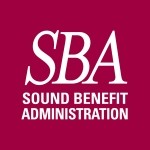The use-it-or-lose-it feature of Health Flexible Spending Accounts (FSA) has always been a sticking point for participants and employers. Congress has tried to help participants avoid the use-it-or-lose-it problem by adding the 2.5 month grace period and then the $500 carry-over option to extend the time a participant can incur expenses to spend down unused contributions. But, what happens when a participant still ends up forfeiting money and the plan ends up with un-reimbursed funds? The employer (notice I didn’t say the employee?) has four available options for using the leftover money.
- Defray plan administration costs. The most straightforward way to “spend” excess participant contributions is to use the money to pay for administration expenses related to the FSA plan. In this option, most likely the money goes back to the employer who books the gain against the third-party administration expenses for the year on the general ledger.
Ah, but you wonder, what if the total amount of excess exceeds the amount owed to the administrator? What if participants forfeited $2,000 and the cost of administering the plan for a year was only $1,000? In this case, this gain by the FSA plan (forfeitures offset by any employees who may have received more than they contributed at the time of a mid-year termination of employment) are now considered plan assets.
Bonus for the employer, you may be thinking. However, ERISA says the employer is not supposed to make money on this benefit plan. So, once an employer has defrayed the cost of the administration of the plan, what happens to any surplus funds? Here are three other acceptable options for disbursing the gains – in order of complexity:
- Reduce participant burden. If you think of these plan assets as a mini-medical plan, an employer can use the Year 1 gain to reduce required “premiums” in Year 2. In essence, the employer would “contribute,” and therefore offset, a dollar amount to each FSA participant for the following year’s qualified expenses.
Example: A participant electing to contribute $500 to a Health FSA for the next year might only contribute $480 personally, the employer would “contribute” the other $20.
- Add to participant accounts. An employer could elect to use the Year 1 gain to increase Year 2’s annual contribution above a participant’s elective limit in the next plan year.
Example: A participate elects to contribute $1,000 for the next Health FSA plan year, but submits incurred claims of $1,200. In this example, using the gain from Year 1, this participant could receive the extra $200 to cover incurred expenses.
This is not a popular option because this would be meaningless to employee who elected the right amount of coverage without excess claims. Additionally, employees might come to expect the extra claims coverage in subsequent years.
- Pay participants in cash. An employer could elect to use the Year 1 gain to provide dividends or cash refunds to Year 1 participants.
Example: Year 1 is finally reconciled (we’re in the middle of Year 2 at this point) and it is determined that there was a gain. The employer elects to distribute said gain to Year 1 participants in a uniform basis. (Remember, even if only one participant forfeited money, you can’t give that one participant back the excess). All Year 1 participants receive a share of the gain on a per capita basis or on a weighted average basis (based on the Health FSA elections of each participant in the year in which the gain occurred). The dividend or cash refund is considered income, so it must be reported and have Federal and FICA taxes deducted.
Please note, that even if a Year 1 participant has terminated employment, they are entitled to payment and an employer must issue a W-2 for their portion of the dividend or cash refund – keeping in mind that this is possibly now a new calendar year. The employer is responsible for tracking down the terminated employees. Good luck with that.
With all of these examples, let’s keep in mind that forfeitures/gains are not as easy to reconcile as in the past. The new $500 carry-over curve-ball might cause a future year gain – possibly for years to come (does your plan allow the carry-over into infinity? Note to self: limit the number of carry-over years or make it mandatory that participants enroll in Year 2 to be eligible for the Year 1 carry-over) and booking a gain or loss from a bookkeeper’s perspective becomes a tricky matter.
Currently, we have a FSA participant with a 2014 carry-over of $500. Luckily, there is an obvious answer for this employer, offset the administrative fees of the third-party FSA administrator because eventually we (the third-party administrator) will have billed this client $500 in monthly administrative fees!
Whatever you decide to do, document, Document, DOCUMENT whichever method your company uses when experiencing a FSA plan gain. And, use the same method year after year. Then, in the event you are ever audited, be prepared to show proof of the method used and display your records as evidence of uniform handling of plan assets.
As always, if you need help determining your best course of action, call us. We can walk you through your options and the ramifications of each.
